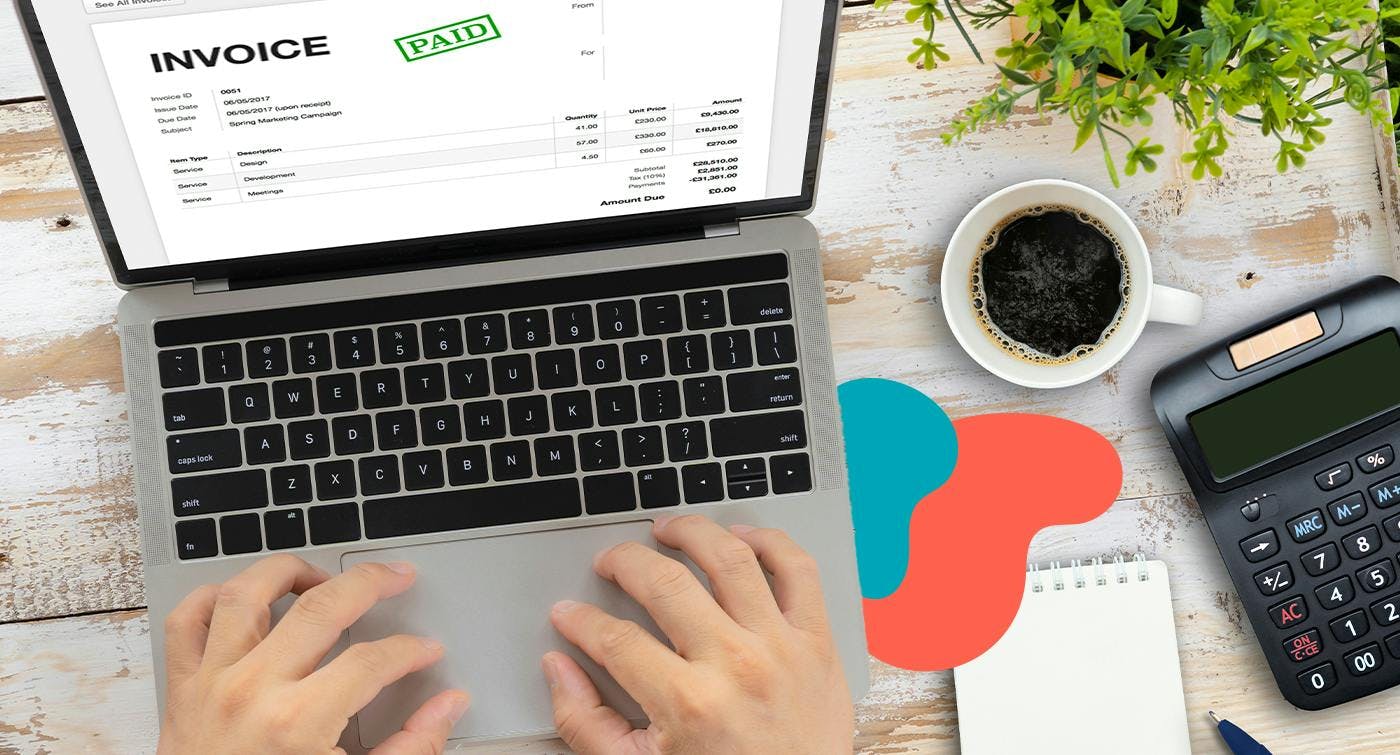NEW BUSINESS • 20 DECEMBER 2022 • 4 MIN READ
The ultimate guide on what to include in your tax invoice

SECTIONS
What’s a tax invoice?
Changes in 2023 to look out
What should you include in your tax invoice?
How do I create an invoice?
eInvoicing
You have finished a great job for your customer. Now is time to think about billing. It’s worth the effort to prepare a professional tax invoice for your customers. Today we’re going to discuss some key elements of a proper tax invoice.
Please note, from 1st April 2023, the NZ government is going to make the record keeping easier, and the requirements for a tax invoice will be reduced. Find more information on tax invoice changes in 2023.
What’s a tax invoice?
A tax invoice is a commercial document that includes the services or goods you provided, the quantity, the unit price and the GST on the goods or services. When you’re running your own business, you will need to issue tax invoices for jobs you completed for your customers. A tax invoice can be used to verify the sales or purchase price and the GST on the job.
To be able to claim the GST back on the purchase, you must have a valid tax invoice from your suppliers as well.
While tax invoice is mainly used for claiming GST for business, it will also be audited by IRD as supporting documents when they conduct an audit on the records your business keeps.
Changes in 2023 to look out
The upcoming new laws are going to make the GST rules and invoicing modernised. The new rules are designed to support e-invoicing and electronic record keeping, particularly New Zealand’s adoption of the Pan European Public Procurement Online (PEPPOL) framework. There is no change to how the GST is calculated, but the rules relating to invoicing and record keeping. Some changes started in March 2022, but mostly will be implemented on 1st April 2023.
What does this mean for you as a business owner?
Essentially, record keeping will be more efficient, automated and cheaper from 1st April 2023 onwards.
- There will be new terminology to support flexible record keeping practices
- New information requirements will need to be met based on the value and type of the supply transaction
- As a business owner, you don’t need to keep every single physical document for bookkeeping purposes.
- Your transaction records, accounting information or contract, containing the information IRD needs will be sufficient for tax filing purposes.
- Increasing the use of automated exchange between a buyer's and seller’s software, for example, PEPPOL e-invoicing.
What should you include in your tax invoice?
As per IRD’s requirements, the following information must be shown on a tax invoice currently:
- the words 'tax invoice' in a prominent place
- Seller’s name or trade name
- Seller’s GST number
- Issue date of the tax invoice
- a description of the goods or services you sell
Please keep in mind, the rules are changing in six months. But for now, it’s still necessary to continue to meet IRD’s requirements.
It’s always good to list items clearly in your tax invoices. If you have different payment options for your customers, always list them. The more options and details you provide to your customers, the faster you could receive money from them. If you charge your clients with late payment penalties, you should also list that on your tax invoice, so that your customers are aware of that.
How do I create an invoice?
You can always use a Word or Excel template for creating a tax invoice. You can also personalise your tax invoice using tools available online such as Canva or freeinvoicebuilder. Moreover, you are free to change the formatting, front and details to customise your tax invoice, even adding your logo.
But always remember to keep the information required by the IRD on it.
Got any questions about Beany?
Book a call with one of our friendly problem solvers today.
eInvoicing
When you think about eInvoicing, it's more than sending your tax invoices electronically (e.g., via pdf and email), it's a direct and reliable data exchange between two accounting systems. eInvoicing reduces the amount of time handling and processing tax invoices, thus reducing human errors, delays, and administration time, making payments faster, smoother, safer and easier.
If you have a lot of invoices to process each month, then einvoicing may be your better choice. One of the most commonly used eInvoicing software is Xero. With a proper Xero subscription, you could generate your invoices on Xero, and send the invoices to your customers directly. However, it’s important to know you can only send e-invoices to your customers who are using einvoicing as well. You can read more on this topic here.
Who are Beany?
We’re an online accounting firm that is always right here for you, your accounting pain relief. The most advanced technology lets us work way more closely with you than a normal accountant world.
We have a dedicated team of certified accountants and a support team to take care of your business no matter where you are, so you can focus on growing your business. We take out the ‘fluff’, break down the barriers and get things done. Looking out for you is what we are all about. Get started for free today.
Cherry Roe
Accountant & Freelance Writer
I started my accounting career in 2012 and obtained my CA in 2015. Outside of work I enjoy hiking and hope one day to complete the Tongariro crossing walk.
subscribe + learn
Beany Resources delivered straight to your inbox.
Beany Resources delivered straight to your inbox.
Share: